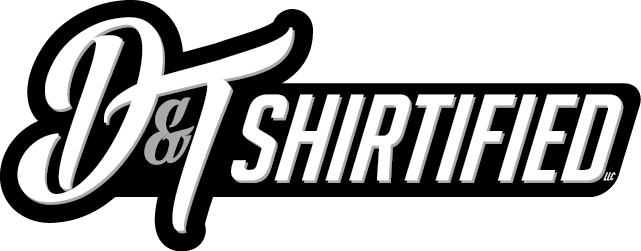The process of putting the cool in the shirt
- Artwork approval
- Print film
- Burn screen
- Wash screen
- Tape screen
- Align artwork
- Cure
Often times we’re asked about how we turn pixels into ink. It mostly involves brown sugar, a cork, and a blouse. Ok not really, but there is a science to it! Let’s take a look at the screen-printing process and how we turn digital designs into perfect ink pigments.
Screen-printing is a multi part process that is dependent on each segment being done correctly to ensure an excellent end product. The first step in the process is creating the Artwork.
Artwork
The artwork is the most transparent step involved, as it’s clearly what is going to be printed on the shirt. Artwork is done in Vector format using a program such as Adobe Illustrator. Vector format allows the artwork to be resized larger or smaller without loss of quality.
Print Film
Once the artwork has been approved, it is printed on a transparent film. If a design has more than one color, each is printed separately, and will be lined up in a later step.
Burn Screen
Once the film has been printed with the design, the next step is to expose the image onto a screen. A screen consists of a metal frame with a very fine mesh that has been stretched across it that allows ink to come through. There are various mesh count screens, with a higher mesh number having a tighter pattern allowing for more detailed images.
The screen is coated on both sides with a special liquid called emulsion. This is a light sensitive material that reacts and hardens when exposed to a very bright light source.
The film is placed underneath the screen on an exposure table in which light from underneath hits the screen for several minutes and hardens the emulsion. Wherever the screen is covered up, which is where the design on the film would be, the emulsion has not been hardened and can now easily be washed out.
Wash screen
Once the screen has been exposed, it is placed in a wash out booth in which the unhardened emulsion is washed away and thus leaving an open portion for the ink to freely flow through.
Tape Screen
After the screen has been given enough time to dry, it is taped to ensure there are no pinholes and to make the clean up process easier once the printing is done.
Align artwork and Print
Once the screen has been taped it is ready to be put on the press. We use both Automatic and Manual machines. For this illustration we’re using a manual machine.
Each piece of film has registration marks, and these are used to line up the colors of the design. Each different screen is lined up to the film so that each color is registered.
After every screen has been lined up, let the printing begin! Ink is placed into each screen, along with the squeegee for that color, and the shirts are ready to be printed.
As the squeegee is pushed into the screen, the ink only goes through the part where the emulsion washed away from the screen, while the rest of the screen hardened.
Cure
After each color is printed, it is put into a special dryer that heats it to 315 degrees for around a minute. This ‘cures’ the ink. That is, the ink is now hardened and no longer able to move around and can now withstand most everyday wear and tear.
Put all these steps together and you have the magic formula to make a tshirt!
